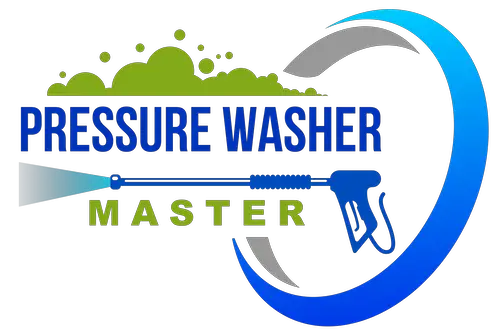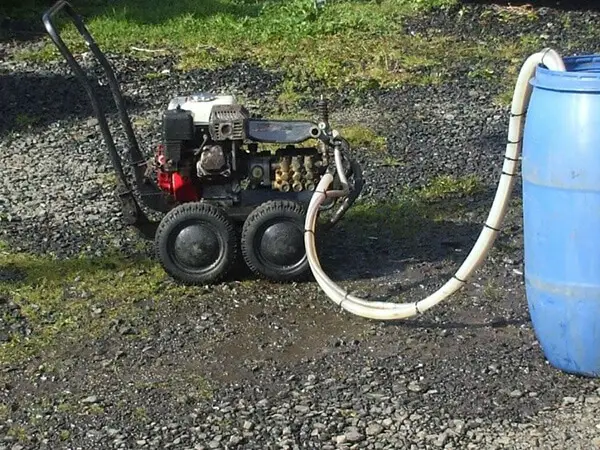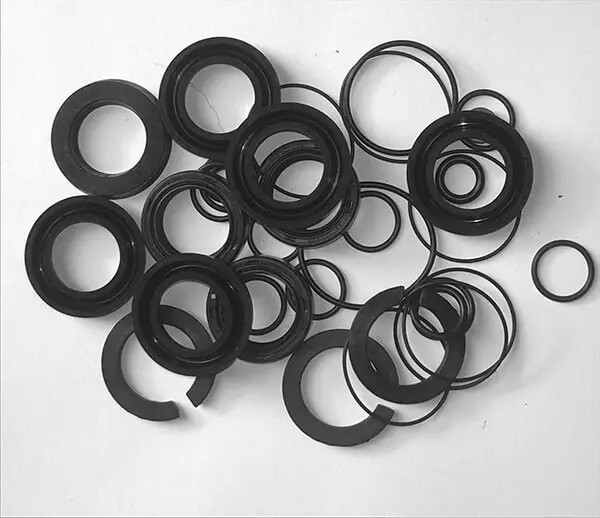The weather has finally improved, and you want to clean your driveway or vehicle. Your pressure washer, on the other hand, does not appear to be in a good condition.
You notice the pressure washer pump oil milky, but don’t know why.
If you’re unfamiliar with mechanical components and aren’t sure where to start troubleshooting, don’t worry. This article will walk you through all of the required procedures and details to get your pressure washer back in its perfect state.
Many factors can cause this issue. Let’s find out together!
Why Should You Take Care Of The Pump Oil?
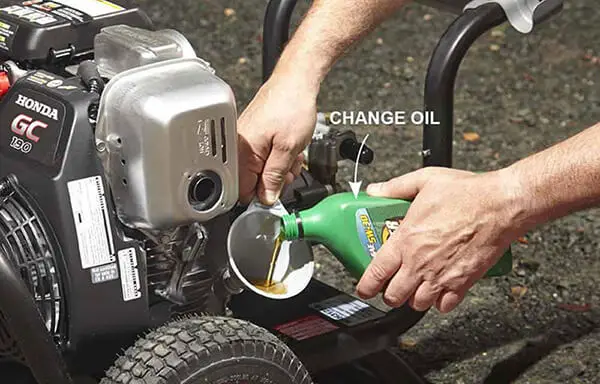
To extend the life of components
It acts as a lubricant for moving components, decreasing friction. This lowers the temperature. Excess heat is an issue because it causes the seals to expand, putting them in danger of cracking.
To ensure the criteria for a warranty
If you fail to conduct the required maintenance, check your User Manual to determine if your warranty is voided. When you take it in for warranty repairs, it’s obvious to see unclean, unaltered oil.
To save money
Axial pressure washer pumps: Depending on the cause of failure, it may not be worth fixing. If the only problem is a clogged unloader valve, you can disassemble the pump and clean or replace it.
That isn’t an issue at all. If your seals or o-rings are broken or damaged, you may fix them for a reasonable price. However, if you need to replace pistons or the swashplate, it’s best to replace the complete pump.
Triplex water pumps: Because a new (excellent) triplex pump may cost $500+ and the individual components that are likely to fail are straightforward to remove and replace, it’s almost always worth it to rebuild.
3 Main Reasons For Pressure Washer Pump Oil Milky
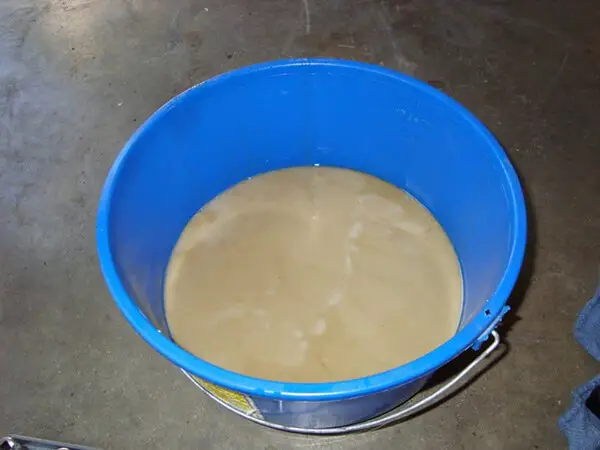
Water contributes to the milkiness of pressure washer pump oil, as you probably well know. But how does water get into a pressure washer in the first place? Are there any more reasons?
Yes, however water is responsible for over 70% of the time for the milky appearance of the oil. There are, however, a few other factors that play a role in this problem. Let’s look at a few of them:
Damaged Seals
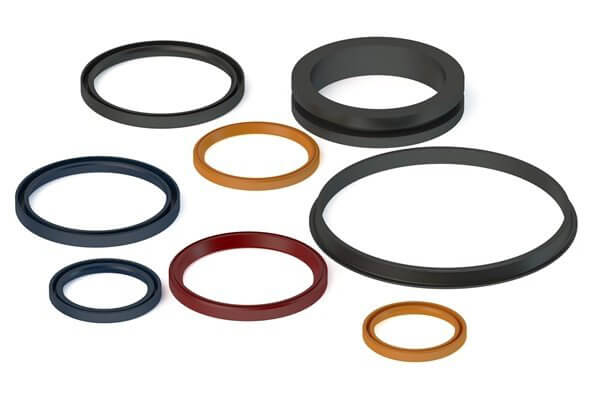
To avoid wear and tear and enhance machine efficiency, all pressure washer pumps are loaded with lubricating oil. Oil seals that prevent oil from leaking out of the pump can become worn out as a result of poor pump maintenance, and they must be replaced. Water may mix with the oil as a result of the broken seals, resulting in a milky-looking oil.
Excessive Humidity
It may sound strange, but high humidity in the air can cause water condensation in the pump’s oil casing, resulting in milky oil. When the pressure washer hasn’t been used in a long time, this is a very likely scenario. If you use the washer often, the humidity will not cause any pump problems.
Cracked Plungers
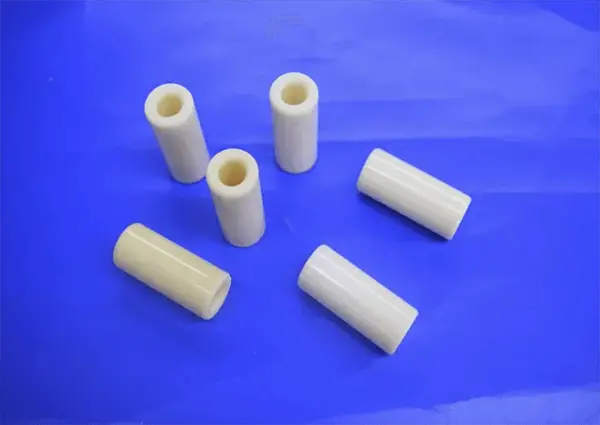
If your plungers have any fractures, water will get into the oil as well. The two most common causes of water entering the pump’s oil are worn-out seals and damaged plungers.
How To Fix Pressure Washer Pump Oil Milky
You should now be aware of the numerous causes behind the milky appearance of the oil pump. But don’t be alarmed if the oil in your pressure washer seems to be milky. I mean, it’s not like it’s the end of the world.
We’ve put together a list of quick steps for you to try. Furthermore, if you follow these guidelines carefully, you will be able to resolve this problem in no time. So, without further ado, let’s get started:
Purchase An Oil Seal Kit
For the damaged seals, you’ll need to acquire an oil seal kit. So, first, go to your favorite local store and get an oil seal, or order one from Amazon. Also, the oil seal is dependent on the model of your washer pump, so make sure you know which one you have.
Dewalt 4200 and Honda GX 390 are two popular washing pumps. If you know what type of water pump you have, you may simply purchase the appropriate oil seal. Replace the oil seal kit with the oil and water kit seal after purchasing the oil seal kit.
You can easily remove your old oil seal if it is made of rubber by tugging it out.
Alternately, you may replace the complete assembly pump to guarantee that you have a functional device once again. For Briggs & Stratton, Troy Bilt & Craftsman, and everyone else, here are some typical replacement units.
Replace Worn-Out Seals
A worn-out oil seal might happen at any time. One of the most prevalent problems with washer pumps appears to be this. Unfortunately, it’s necessary to replace a seal once it’s worn out.
Aside from that, the weather can cause the seals to expand and compress. So be on the lookout for that as well.
After removing the worn-out seal from the pressure washer, replace it in the same location with the new seal, making sure it fits snugly.
Select The Suitable Seal
No oil or water may leak into or out of the pressure washer if the seal is properly installed. As a result, always utilize the proper washer pump seal. Don’t use too much force to force the seal into place.
How To Disassemble A Pressure Washer
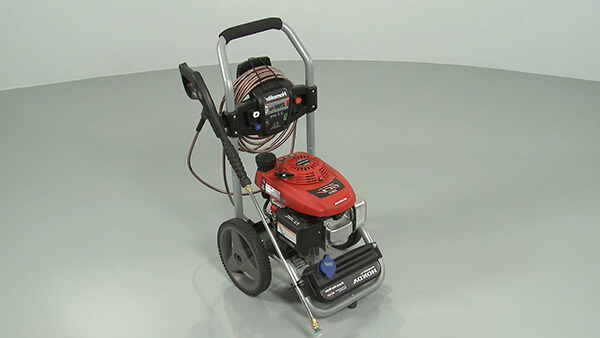
Apart from changing worn seals, you should remove the pump to ensure that everything is in working order, including the oil gasket.
Here’s how to accomplish it step by step.
Remove the Case
Unscrew all of the bolts in the external case with a wrench. Remove the bolts with care and set them in a basin. The casing will be easy to remove thanks to the unbolting method.
Remove the Allen Socket
The inside elements of the pressure washer will be visible after removing the shell. Remove the Allen socket using a wrench to have a good view inside the pump casing.
Remove the Valve
Once you’ve located the pump case, you’ll see a valve inside it. Remove it with a pair of forceps, being careful not to damage this vital component.
Open the Casing
Carefully strike the casing with a hammer to split it in half. You will be able to observe the oil rings as a result of the procedure. You’ll see the packing, leaking oil, and water after opening the casing. To restore permeability, you may either use re-seal or replace the complete packing.
Reassemble the Pressure Washer and Add Oil
You’ll need to reassemble the pressure washer once you’ve restored the broken components. The next step is to add the new oil while holding the pump in an upright position.
Check out this video for a better understanding:
Conclusion
When you see pressure washer pump oil milky, panic isn’t the first thing that comes to mind. The reasons for this condition are now obvious, and how to address them was explained in depth.
You may undoubtedly do your best to improve to eliminate such issues. Regular maintenance and care will save you time and money by preventing serious problems and extending the life of your equipment.
